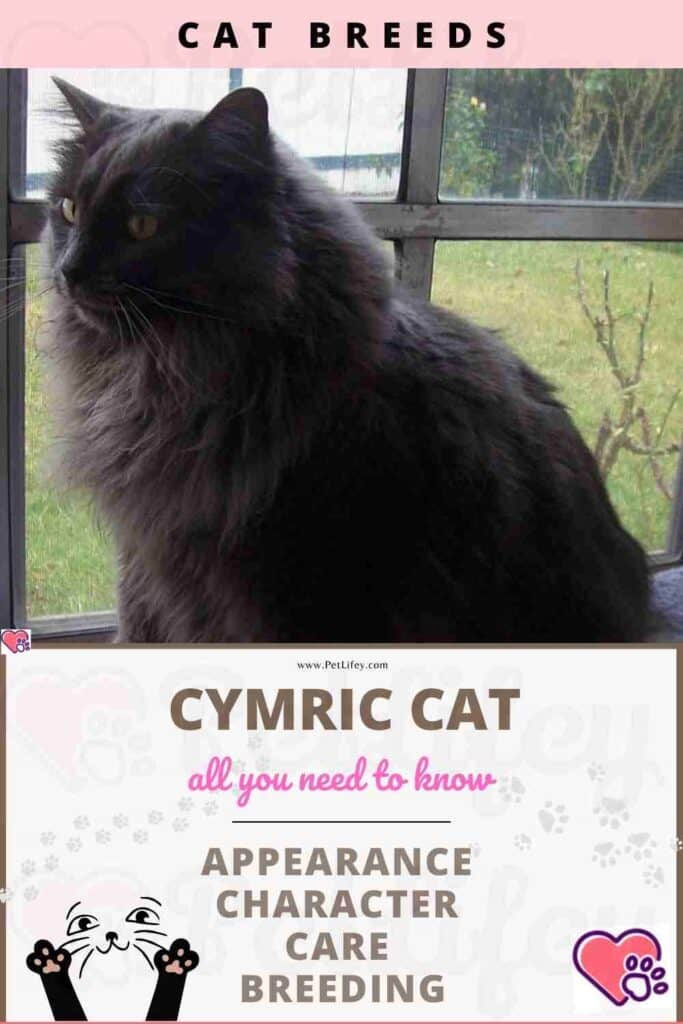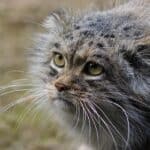
The Cymric cat is a sociable and affectionate cat, who enjoys company and does not tolerate loneliness well; it is therefore good to provide them with a companion if, as most often happens, we have to be away during the day.
It doesn’t have to be another feline because, like the Manx, it binds perfectly to dogs, even large ones.
The origins of the Cymric Cat
Originally from the Isle of Man, the Cymric cat is quite simply the long-haired version of the Manx. To obtain it, it suffices to cross two Manx carriers of the long-haired gene; the standard is therefore almost identical to that of its cousins.
It is also the result of close crosses caused by the island’s limited feline population (which lies between England and Ireland); this natural selection gave birth to all tailless cats. Also called Welsh, it appeared in the seventies in cat shows and, if the Manx can be considered a rare cat, the Cymric is even more so.
Note that it is forbidden to “marry” two Cymric together or with a Manx. We marry the Cymric with the British Shortair or the British Longhair.
Appearance of the Cymric Cat
Apart from the lack of tail and the length of the coat, roundness is another characteristic of the Cymric cat: its eyes are round, as are its head, feet and small butt; his ears, medium and wide apart, are rounded at the end.
Overall, this cat must therefore be very round. It is a compact and muscular animal, with thick sides; its back is short and forms a supple arch between the shoulders and buttocks, which are higher.
The legs are heavy boned and have robust musculature; the posterior ones are frankly longer than the anterior ones. Its coat is mid-length, in reality it is a fine double coat, with a dense and thick undercoat and a more open outer hair; it can present quite marked seasonal variations.
Coat color of the Cymric Cat
In the Cymric cat, all colors are accepted except those which display too obvious hybridization with other breeds, such as Chocolate, Lilac and Himalayan varieties which carry the colorpoint gene.
The character of the Cymric Cat
It is an affectionate and devoted cat, a real companion for the whole family, whether children or the elderly; it is balanced and very intelligent, loves to feel loved and, precisely to gain the affection and approval of its master, it learns everything that is taught to them.
The love it has for his master leads them to take protective attitudes towards them and their house: it is a real “watch cat” who blows and even attacks strangers who have the misfortune of arouse its mistrust.
Hug:
Affectionate, generally very pleasant company.
Player:
It loves to play! I can’t wait for the daily play sessions where this feline can exercise its hunting skills.
Calm:
As it knows how to adapt, it can also be calm and very gentle.
Intelligent:
Very intelligent, it learns quickly, no matter what you want to show them … or what it will discover themself!
Fearful / Suspicious of Strangers:
It can take a bit of a long time to gain trust. But by respecting it, and by giving it time, it will be possible.
Independent:
Sociable, it prefers the presence of their humans to solitude.
Behavior of the Cymric Cat
Talkative:
The Manx Longhair typically uses sounds other than meowing to express themselves.
Greedy / gluttonous: Quite greedy, this cat often prefers to have his nose in the bowl rather than to exert himself.
Need for exercise:
Remarkable jumper and sprinter, its energy level is however moderate.
Runaway:
In theory too close to its owners to run away, there will always be exceptions!
Compatibility of the Cymric Cat with other animals
With Dogs:
The Manx Longhair can get along very well with a dog, provided adequate introductions are made.
With other cats:
Cohabitation will always be possible with other cats. it will just be necessary to give them the time and the tools to come to appreciate themselves, or at least, to tolerate themselves!
With Children:
This beautiful tailless feline can demonstrate great patience with children… under supervision anyway!
With the Elderly:
As long as it can move and jump, this tomcat will enjoy the company of an elderly person, especially if she is very often with him and gives him a lot of attention.
Price of the Cymric Cat
Depending on gender, lineage, type, age, etc., it can cost anywhere from 600 USD to 1300 USD to purchase a Manx Longhair. You have to plan a budget of around 50 USD / month to ensure good care.
Maintenance of the Cymric Cat
Grooming:
While daily brushing is recommended, its grooming remains fairly easy. During the moulting period, however, you may need to redouble your efforts.
Hair loss:
The Manx Longhair sheds moderately.
Food of the Cymric Cat
Good quality food, in croquettes and or pâté, without excess and served in an interactive bowl is ideal. We must avoid excess at all costs, because, like his short-haired counterpart, this cat is prone to overweight.
Caring for the Cymric Cat
If it has no problems caused by Manx syndrome to which it is, of course, also subject (in this case he hardly survives more than a few months), it is a very healthy, very robust cat, who does not require special care (apart from the usual grooming).
One of its best characteristics is its longevity: if it is well followed, it easily reaches the age of twenty without any particular problem due to its advanced age; it may also be due to the particularly slow maturation of the Cymric cat , which, like the Manx, becomes an adult between the ages of three and five.
Health of the Cymric Cat
Life expectancy:
Perhaps because it matures slowly, it can sometimes break records for longevity, averaging around fifteen years .
Hardy / Hardy:
Surprisingly hardy, this is a relatively healthy breed, if Manx Syndrome is excluded.
Tendency to
gain weight : The Cymric seems to have a genetic predisposition to being overweight.
Frequent illnesses:
- The Manx syndrome: when the mutated gene shortens too the spine, severe abnormalities appear at the spine and spinal cord, as a form of spina bifida, but also at the level of the bladder, bowel, the hindquarters … The life expectancy of these unfortunate people is very shortened, the record being 5 years
- Megacolon: often of nervous origin, the colon is no longer able to contract to be able to eliminate stools. It may or may not be part of the Syndrome
- Intertrigo: infection in the folds of the skin
- Corneal dystrophy: malformation of the eye
The Cymric can also be called upon to develop the same pathologies found in any other cat without a pedigree. It can also present a certain fragility to periodontal disease (gingivitis and tartar). Prevention and dental care will be recommended.
Reproduction:
The Manx (M) gene is responsible for anuria. He is dominant and therefore will express himself automatically if he is present. However, all cats that have the M gene, which lack a tail, have only one mutated gene.
The other allele codes for a full length tail (m). They say they are [Mm]. Indeed, a kitten [MM] will have so much damage to its spine and spinal cord that it will not be viable. It is therefore a lethal gene, and the reproduction of tailless cats is therefore delicate.
Possible marriages with the Cymric are the breeds: Cymric, Manx , British Shorthair and British Longhair. But you must at all costs avoid mating two rumpy cats, because then there is too much risk of Manx Syndrome in the kittens.
Good to know
The nerve endings of the tail are always present, even in the absence of a tail. Applying pressure to this area is painful for the Manx Longhair. Likewise, supporting the hindquarters when lifting it will prevent tension in the spine. On the other hand, whether he has a tail or not, the balance of this great jumper is always optimal.






